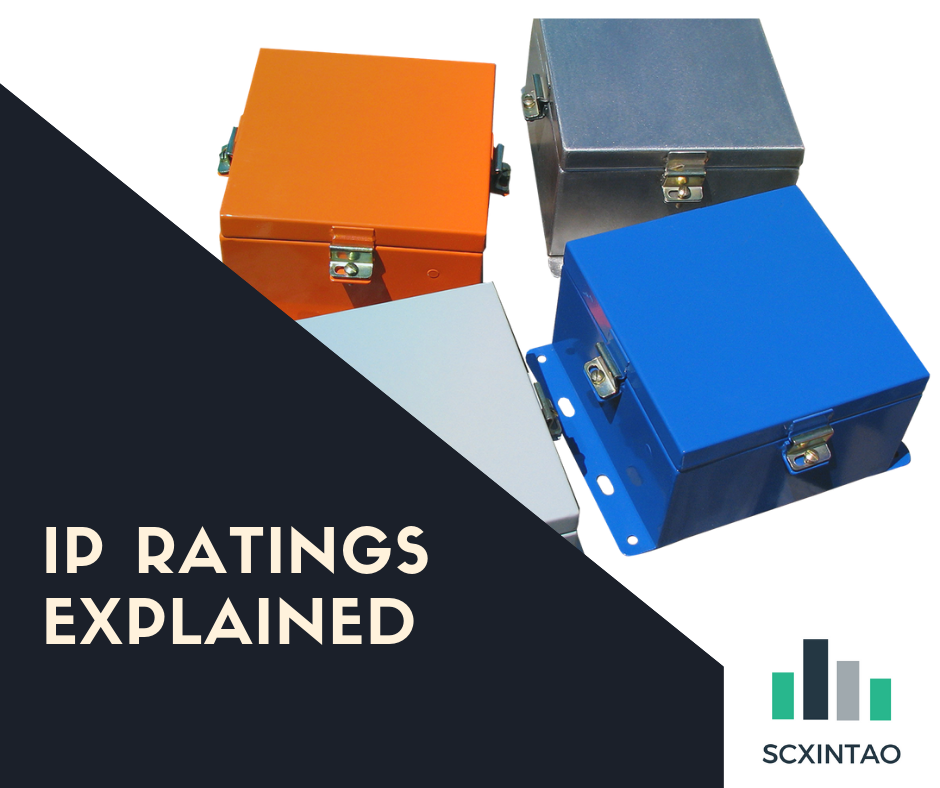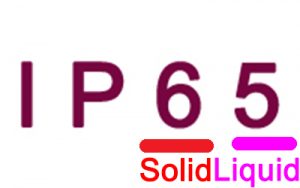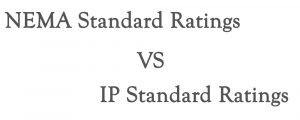
It is beneficial to know what the protection of your electrical enclosure can give to your electrical equipment by being knowledgeable about IP ratings. So that you will know when and what types of enclosures you should use in any application.
The IP Rating (Ingress Protection) is widely used by companies or buyers in Europe countries to decide and specify the protection of an electrical enclosure should provide against harsh, environmental conditions.
This rating system is created by International Electromechanical Commission (IEC), a worldwide organization for standardization to set specific rules and standards and to promote international cooperation on all questions about electrical and electronic fields. To set specific and quality standards, the IEC collaborates closely with the International Organization for Standards (ISO).
If anyone wants a complete description of the IP ratings and associated testing, it can be found in IEC Publication 529. However, it is important to note that before these ratings at first are set to classify electrical enclosures, now it is now used by engineers to compare levels of sealing. Now, IP ratings are used by companies and manufacturers to classify the degrees of protection an electrical enclosure can provide for equipment housed in it. When industries used this standard, the classification system enabled the uniformity of standards in methods of describing the protection an electrical enclosure can provide and what tests should be done to prove the several degrees of protection. To see the different applications and tests are done for IP ratings, please see this link: (Link the article: What is IP Rating? Numbers & alphabets in IP Ratings explained.)
To recap, the IP rating normally consists of two (but may have three) numbers, and in several occasions, a letter:
Protection from solid ingress or intrusion
Protection from any kind of liquids especially water
Protection against mechanical impacts but this is commonly removed or omitted.
To further explain the ratings, levels 5 and 6 are primarily designed for dust protection. In level 5 IP rating, it can allow some dust to enter the enclosure but the amount of dust allowed are not enough to affect or deviate the equipment operation. While in level 6, the enclosure is totally sealed, dust-tight. Tests are conducted to make sure the quality inside a dust chamber. Enclosures are subjected to fine talcum powder and to imitate dust in the wind, it is circulated in the room by a blower. Although sometimes, test requirements need a partial vacuum drawn in the enclosure. These vacuum tests are done for about 2 to 8 hours, and this depends on the air volume drawn in the cabinet. The normal longevity of non-vacuum tests is around 8 hours to ensure efficiency of the enclosure.
Used in scxintao.com
————————————————————————————————————–
In IP ratings, water resistance can vary from water droplets or mild drip resistance, to spray jets and total submersion of electrical enclosures. For levels 3 and 4, to test the quality, water is delivered through an oscillating tube resembling a garden sprinkler, or this can be done manually just by using a showered. The volume of water that passes the spray is about 12.5 litres per minute. When testing enclosures for water ingress, these are exposed in three minutes. In larger cases, at least one minute per square meter of the surface while moving the spray head slowly around.
However, in testing enclosures levels 5 & 6, nozzles are used in water ingress test. The rate in which level 5 enclosure is exposed is at 12.5 litres/minute through a 6.3 mm or (1/4 inch) nozzle. In testing level 6, higher water pressure and flow are required, using a 12.5 mm (1/2 inch) nozzle in a rate flow of about 100 litres/minute. In addition to this, there is no difference in the distance of water source for testing, the standard is 2.5 to 3 meters away from the enclosure. In general, the exposure takes about three minutes to be done.
In submersible enclosures with IP ratings of levels 7 and 8, these enclosures are tested by totally immersing the enclosures in water. In level 7, tests are done through water submersion, 1 meter deep for 30 minutes with its top 0.15 meters below the surface. A special test is conducted for level 8 enclosures because the user should specify their requirements for submersible level 8 IP rating to the manufacturer.
First number and second number defined
To further illustrate the significance of first and second number for IP ratings, IP 54 rated electrical enclosure is for protection from solid objects (level 5) and protection from liquid ingress (level 4.) With this in mind, the level 5 indicates that the enclosure can provide protection from dust with limited ingress, while level 4 shows that there is a limited ingress protection designed for low-pressure water jets from all directions. It is important that the user should be knowledgeable about the levels of IP ratings.
If there is only one class level of protection, an “X” can be used as a substitution for one of the digits. For example, the IPX1 is designed to protect electrical equipment from vertically falling drops of water or condensation.
In the United States, a similar level of classification to the IP rating system is published by United States National Electrical Manufacturers Association (NEMA). However, NEMA standards and ratings address other features not included or addressed by IP codes. This includes corrosion-resistance, gasket ageing, and construction practices. It is important to note that it is possible to map NEMA enclosure ratings to satisfy or even exceed the standard IP code criteria, but it is not always possible to map the IP ratings with the NEMA enclosure ratings. This is because IP ratings do not require any additional features for electrical enclosures stated in NEMA ratings. Companies should know the standard IP rating of the enclosures needed for their businesses, in the beginning, to save a lot of effort into producing these. Especially if there is a need to use enclosures in extreme and harsh weather environment. When purchasing enclosures for your electrical equipment, see the IP rating before deciding on a purchase. This is the way to know if an enclosure can protect your equipment from any particles or amount of dust, prevent water ingress, or gives protection from harsh/extreme weather conditions. In the manufacturer’s perspective, knowledge of IP ratings is a good way to make sure customer satisfaction when designing enclosures from European countries.



